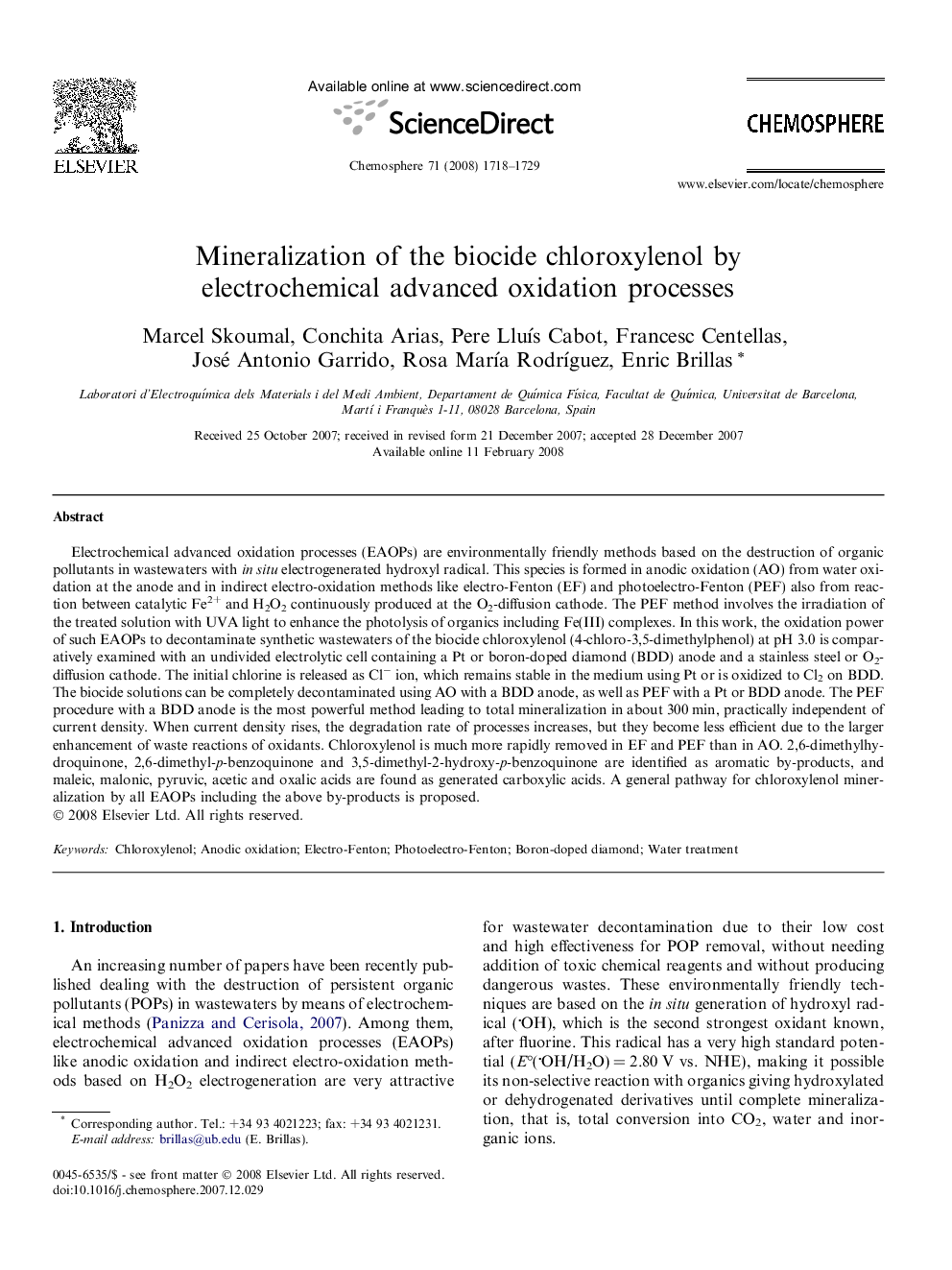| کد مقاله | کد نشریه | سال انتشار | مقاله انگلیسی | نسخه تمام متن |
|---|---|---|---|---|
| 4414209 | 1307704 | 2008 | 12 صفحه PDF | دانلود رایگان |

Electrochemical advanced oxidation processes (EAOPs) are environmentally friendly methods based on the destruction of organic pollutants in wastewaters with in situ electrogenerated hydroxyl radical. This species is formed in anodic oxidation (AO) from water oxidation at the anode and in indirect electro-oxidation methods like electro-Fenton (EF) and photoelectro-Fenton (PEF) also from reaction between catalytic Fe2+ and H2O2 continuously produced at the O2-diffusion cathode. The PEF method involves the irradiation of the treated solution with UVA light to enhance the photolysis of organics including Fe(III) complexes. In this work, the oxidation power of such EAOPs to decontaminate synthetic wastewaters of the biocide chloroxylenol (4-chloro-3,5-dimethylphenol) at pH 3.0 is comparatively examined with an undivided electrolytic cell containing a Pt or boron-doped diamond (BDD) anode and a stainless steel or O2-diffusion cathode. The initial chlorine is released as Cl− ion, which remains stable in the medium using Pt or is oxidized to Cl2 on BDD. The biocide solutions can be completely decontaminated using AO with a BDD anode, as well as PEF with a Pt or BDD anode. The PEF procedure with a BDD anode is the most powerful method leading to total mineralization in about 300 min, practically independent of current density. When current density rises, the degradation rate of processes increases, but they become less efficient due to the larger enhancement of waste reactions of oxidants. Chloroxylenol is much more rapidly removed in EF and PEF than in AO. 2,6-dimethylhydroquinone, 2,6-dimethyl-p-benzoquinone and 3,5-dimethyl-2-hydroxy-p-benzoquinone are identified as aromatic by-products, and maleic, malonic, pyruvic, acetic and oxalic acids are found as generated carboxylic acids. A general pathway for chloroxylenol mineralization by all EAOPs including the above by-products is proposed.
Journal: Chemosphere - Volume 71, Issue 9, April 2008, Pages 1718–1729